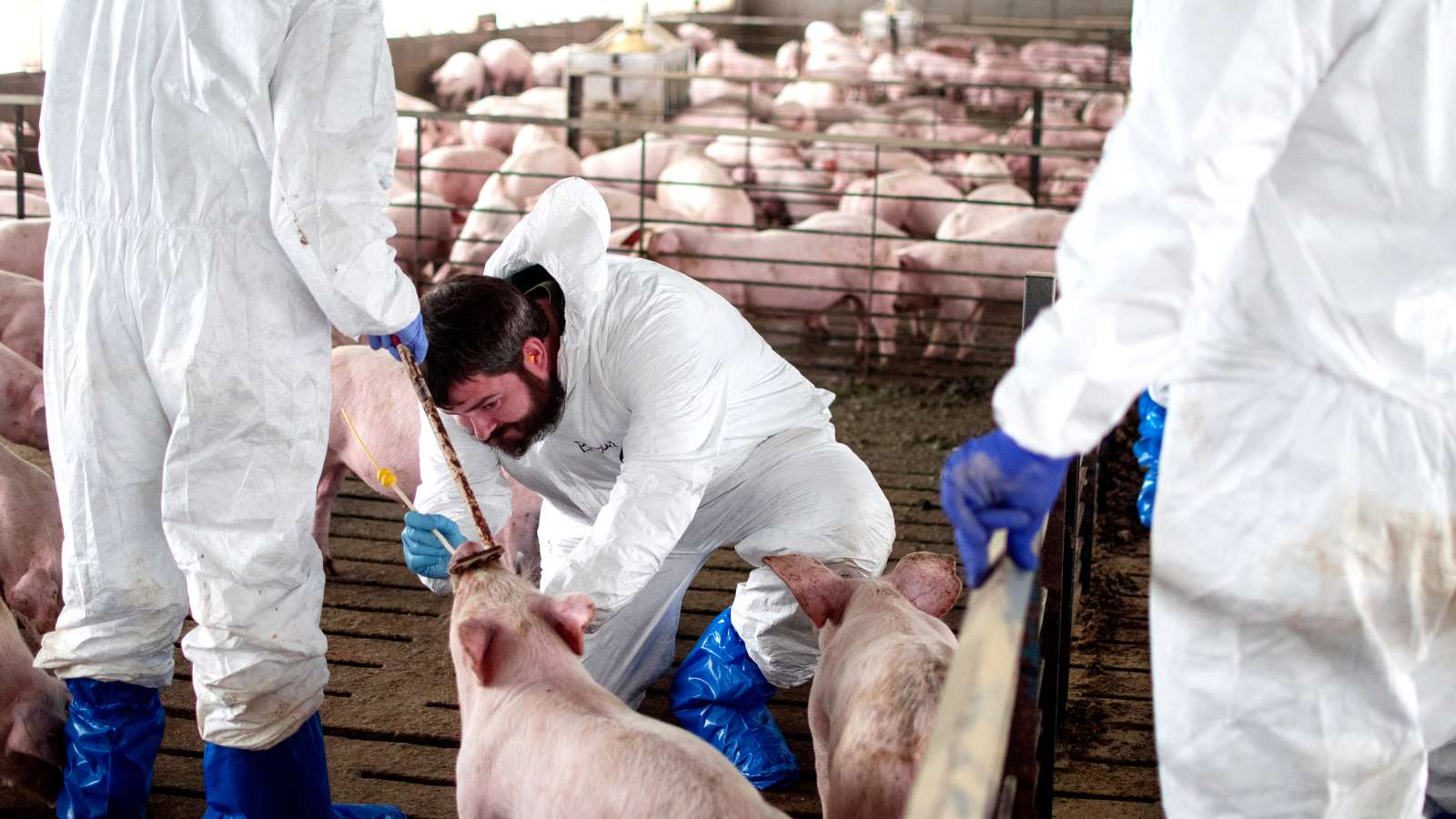Russian attacks reduced access to grain markets. The glut of inventory drove grain prices down, while reduced domestic production increased meat prices. That prompted some Ukrainian grain farmers to raise hogs for the first time, a more lucrative use of their harvest.
Dr. Justin Brown (’22), an assistant teaching professor of veterinary diagnostic and production animal medicine, held monthly online workshops last year for Ukrainian hog farmers. His sessions covered biosecurity, disease identification, treatment, and prevention. Each session included recorded lectures and a live Q&A, starting at 5 a.m. in Iowa so it could be held around the lunch hour in Ukraine.
“The questions came flying in,” Brown says. “And they asked a lot of really good ones. There was definitely a thirst for in-depth knowledge.”
Brown’s slides and recorded lectures were translated into Ukrainian, and follow-up questions were translated by Oksana Yurchenko, president of the Association of Ukrainian Pig Breeders, which organized the workshops.
“Given what they’ve been going through, I was amazed with their responsiveness,” Brown says. “I gave them information they needed about swine medicine, but I also helped maintain some sense of normal life for them, I think.”
When the invasion began, tending to hogs wasn’t a priority, Yurchenko says. About 15% of the nation’s commercial pig inventory was lost, leading to a 100,000-ton drop in pork production in 2022.
“The first two or three months were chaos. We weren’t sure we’d continue to produce pork. But after the situation stabilized more, we came back to our routines,” she says.
As grain farmers realized finishing pigs could convert cheap grain to needed protein, Yurchenko’s group received a small grant from the U.S. Department of Agriculture to cover the workshops. Sessions drew as many as 100 people and were designed for farmers raising swine for the first time.
“For these new producers, getting this information was very, very, very important,” Yurchenko says.
Brown’s presentations were tailored in some ways for a Ukrainian audience. For instance, raising hogs outdoors — more common there than in the U.S. — requires different approaches, he says. But in general, Iowa State’s swine health expertise is applicable in other regions, and it was rewarding to help farmers in need far beyond the state’s borders, he says.
“It’s our mission to disseminate knowledge, and often that happens here in Iowa,” Brown says. “But a pig is a pig is a pig. There are some variances in genetic lines, but they get the same diseases. And the goal is the same: to safely grow food.”
